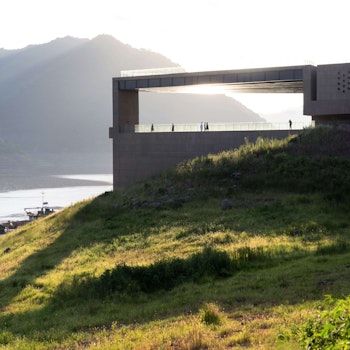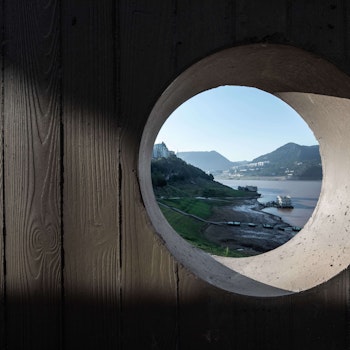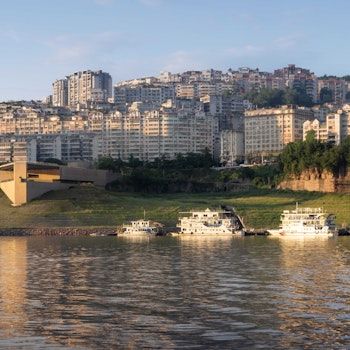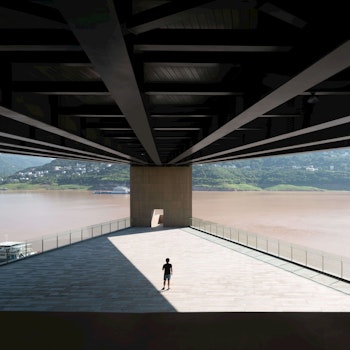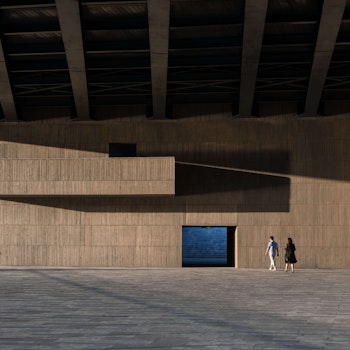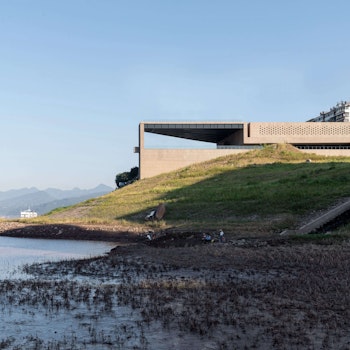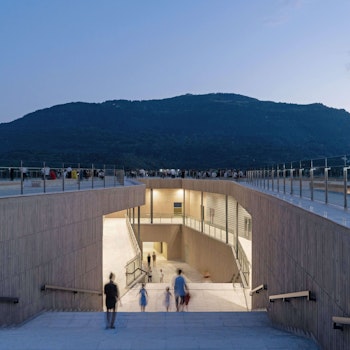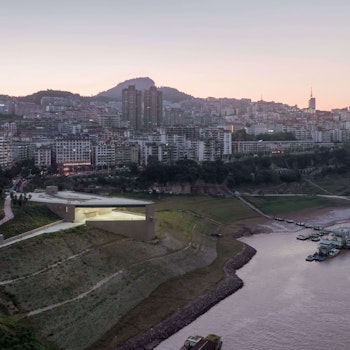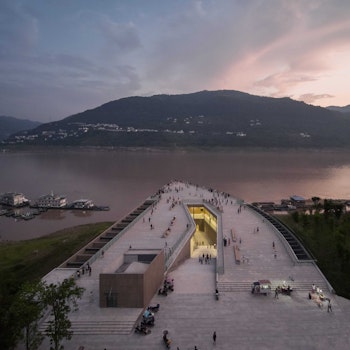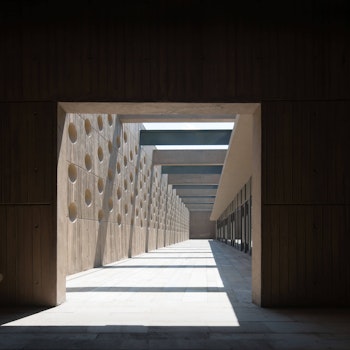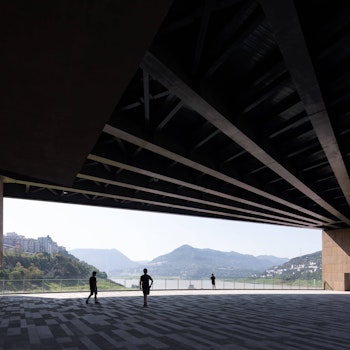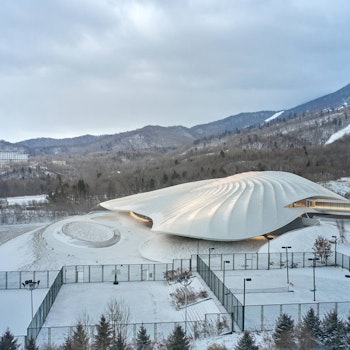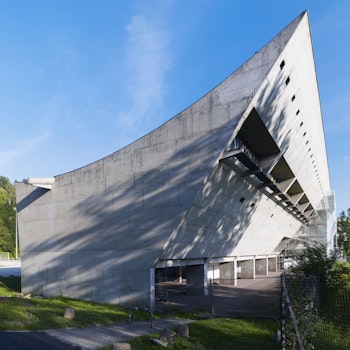ARCHITECT
ATELIER DESHAUS
Located in the region of the Three Gorges Dam, the site in Yunyang in the greenbelt along the Yangtze River is planned for a tourist service center, providing commercial services to residents who visit for leisure. The client wanted to use reclaimed land in a small bay as the site for the future tourist center, which was planned as a two-story building facing the river’s flow. During the first site visit when water was collected for the reservoir and the river was almost at its highest level, it was discovered that a natural cliff, falling straight down into water, began downstream extends upstream, and comes to a sudden stop after enclosing a half of the bay. Upstream from the bay, the water’s edge is sloped and was being transformed into an engineered embankment and revetment. Compared to the broad and open surface of the river, the bay and the cliff overgrown with vegetation that exudes serenity and profoundness are in themselves a distinct landscape resource, and thus warrant preserving. The client was persuaded to shift the project site to the upstream side of the bay, allowing the tourist center to be a finish to the new embankment, as well as continuing the cliff, completing the encirclement bay, and extending onto the revetment of the river.
Yunyang is a city in the mountains with a fairly high density. Along the riverside, where there is seldom flat land, roads and greenbelts are located ten to twenty meters above the maximum water level of the Yangtze River. In the design proposal, the tourist center not only fulfills commercial functions, but also can become a place for the local residents’ everyday activities, such as outdoor plaza dancing, and also become a destination for enjoying the river view. A waterfront plaza is located facing the river, at the same height as the embankment of 1.5 meters above the maximum water level, and close to the water. In order to also give visitors a sense of security so close to the sublime river gorge, the plaza is covered like an over-scaled canopy protecting the people underneath. The waterfront plaza’s elevation above the water a new viewing perspective for visitors enjoying the river view, who can look up and downstream as well as into the far distance, perceiving the poetic sensation of “river waters gush and flow beyond the horizon [江流天地外]” , which contrasts with the usual views across the river. The canopy and its supporting structures frames the view, cropping out the sky, thus highlighting the river and mountains and underlining the sublime of the landscape. With a height difference of nearly ten meters between the waterfront plaza and the riverside roads, they are connected by a grand staircase, on the two sides of which are placed commercial spaces. The roof of the commercial spaces extend into the canopy of the waterfront plaza, creating a platform above that offers another space for the activities of the visitors. In contrast to the canopied plaza, the roof platform is even higher than the embankment, where the experience of the grand universe above and surging river down below is even more magnified.
In some senses, a manmade city in the mountains is the opposite of the river gorges formed by nature. The tourist center, situated here, is between these oppositions. On the one hand, the architecture corroborates and magnifies the potentials of nature by continuing the cliff, re-enclosing the bay, and completing the new embankment, thus embedding itself in nature. On the other hand, facilitated by elements such as waterfront plaza, the grand staircase and platform, the architecture offers the visitors new possibilities. In connecting the river, the city and people, the tourist service center also achieves its own being.
source: Atelier Deshaus
YOU MAY ALSO LIKE

